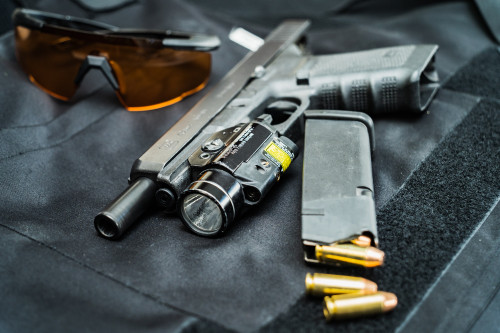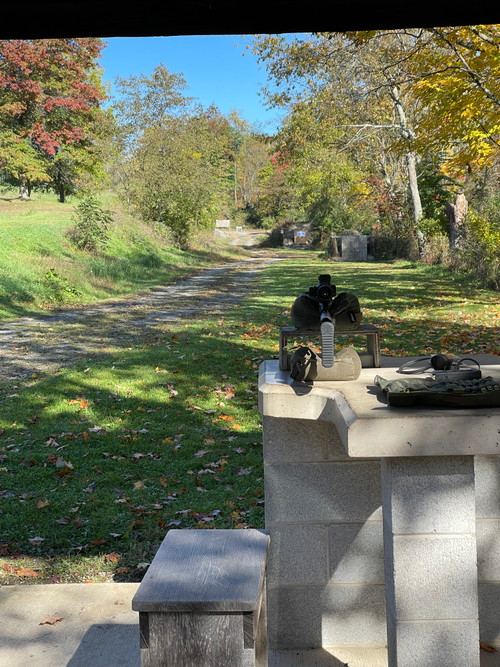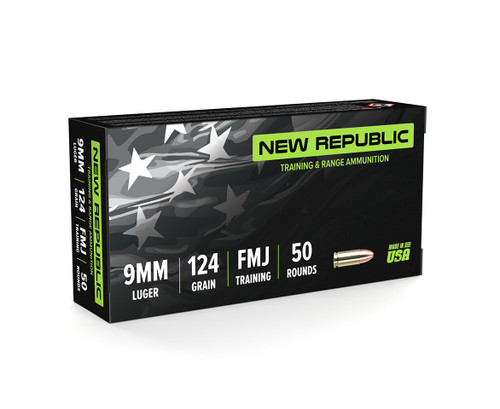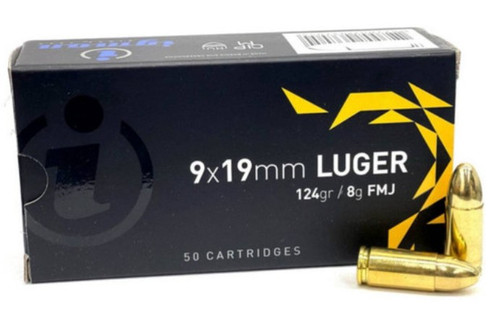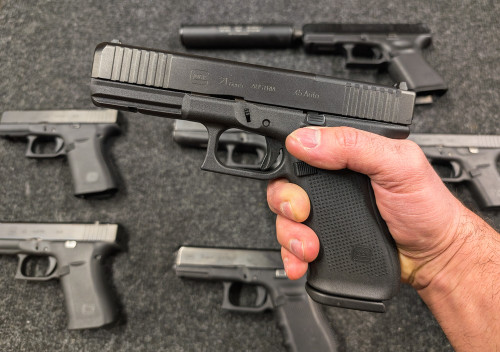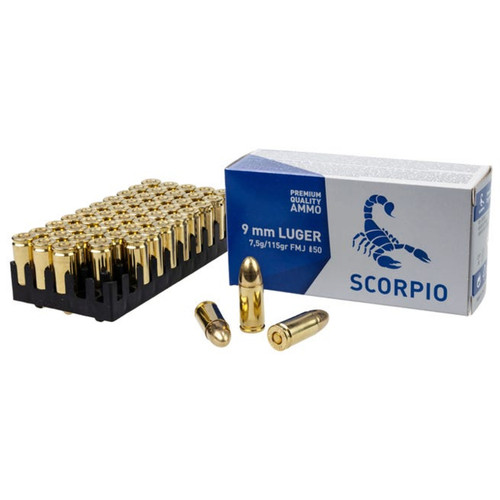Magazines — while completely necessary, are often taken for granted. After all, they just hold bullets, right? What’s the big deal?
Make no mistake, a well-functioning magazine is a big deal. Without a reliable magazine (or magazines) your gun is as good as a screen door on a submarine. In fact, magazines are the cause of the majority of malfunctions in both pistols and rifles, meaning they have the potential to make or break your shooting experience.
That’s why it’s important to stock up on reliable magazines with enough capacity to help you achieve your goals in any shooting scenario. The last thing you want is to be caught in a self-defense scenario or on the range without enough ammo. Clowns on the internet will say you only need one magazine per gun. Because you’ve got more than two brain cells to rub together, you know you need more than that.
If you’ve ever reloaded a magazine by hand, you know how tedious and time-consuming it can be. In the amount of time it takes to reload a mag, even a mindless criminal could plop four bullets in you. What’s more, “assault weapons” bans and the fact that magazines wear out over time dictate that more than one mag is necessary.
But how many do you need? The answer varies by situation, and we’re here to cover each one.
Anatomy of a Magazine
Your gun’s magazine is far more valuable than the sum of its parts and much more complex than it appears. In most instances, magazines consist of a body, floor plate, spring, and follower.
The parts of an AR-15 magazine
- Body: The main housing of the magazine (usually made of steel, aluminum, or polymer) which contains the ammunition cartridges. The body features a series of slots called "feed lips" to guide the cartridges into the chamber.
- Floor plate: The bottom part of the magazine, which serves as a kind of cap, keeping the cartridges inside the magazine. Some floor plates are removable so you can disassemble and clean your mag.
- Spring: A coiled metal spring inside the magazine body, which exerts upward pressure on the follower to push cartridges towards the firearm's chamber. The spring creates a consistent feed of ammo into the gun as rounds are fired. The strength and quality of the spring has a huge impact on the reliability of the magazine.
- Follower: The follower helps maintain the alignment of cartridges to prevent feeding issues. It’s a component (usually made of plastic or metal) that moves up and down within the magazine body, which contacts the base of the ammunition cartridges and is pushed upward by the magazine spring.
Why You Need Extra Mags
There are several reasons why you need extra magazines. The most important reason is the fact that they eventually need to be replaced. The second most important reason has to do with reloading, but that is more about how many mags to carry (more on that later).
Believe it or not, magazines are consumable items. They have a lifespan of effectiveness, including an end of life when they need to go to mag Valhalla.
Magazines are like oil in your car. Oil serves a purpose, and when new, it’s 100% ready to go. However, with use, that oil slowly degrades and becomes less effective. When it reaches the end of its life, you change it out. Mags are no different. So, having only a single magazine for your firearm will only work for so long until you need to buy more.
When Do You Change a Magazine?
If you do more than occasional shooting, your mags will get their share of scuffs and scratches, but cosmetic blemishes shouldn’t affect their function. Instead, there are key parts that need regular attention. These are the barometers that indicate a mag’s health.
When you examine a magazine (either rifle or pistol) look at the feed lips. They’re designed with a very specific geometry and curvature that’s optimized for reliable use. If a feed lip gets bent or otherwise mangled, it can affect reliability and cause malfunctions. This is a bigger issue for steel and aluminum mags (and the steel insert on Glock mags) than polymer.
The body of steel and aluminum mags can also become dented, which can hang up rounds as they travel upward toward the gun during firing. Issues with the body or feed lips become apparent when the mag becomes out of spec.
Bonus Internet Sh!t Slinging Topic: Should You Keep Your Mags Loaded?
Let’s poke a hornets’ nest with a follow-up question. Should I keep my mags loaded?
This is a question with no shortage of anecdotal evidence and venom on both sides. Some say the spring will wear out if you keep a magazine loaded. Others do not. Precious few shooters have no opinion at all.
The bottom line is this: Whether a spring is compressed or uncompressed doesn’t cause it to lose its tension capacity. It’s the repeated loading and unloading that wears it out. Here’s proof from a large spring manufacturer.
This proves both sides right and wrong. The guy who found and successfully fired his granddaddy’s loaded WWII-era 1911 isn’t necessarily lying. The guy who keeps all his mags unloaded unless he’s shooting isn’t wrong either. However, he’s not right about prolonging the life of his mags by doing so.
Another aspect of this sticky debate concerns feed lip deformation. Does the upward tension on the lips cause them to spread and become out of spec? Again, there’s loads of anecdotal evidence here on both sides, but in reality, this isn’t as big of a deal as some would have you believe.
Why does this matter? Because if you have the choice of keeping your mags loaded or unloaded, the smarter option is clear — keep them babies loaded! Pre-loaded mags provide the ideal storage solution for ammo. One of the main benefits of carrying extra mags is the ability to quickly reload by simply exchanging your mag. That doesn’t work if the mag is empty and you have to fiddle around with a box of bullets like an amateur.
You don’t empty the gas from your car when you park it, then fill it back up when you’re ready to drive, do you? Then why not load up your mags and keep ‘em that way?
How Many Mags Do You Need to Own?
For this question, there are a few wrong answers and a bunch of right ones. Any and all right answers are a number that is at least double digits.
As a general rule of thumb, we suggest owning about 10 magazines per firearm. However, if you only own one firearm, you may want about 20 magazines total. Yes, 10 magazines — up to a zillion. That doesn’t mean you need to carry all 10 or 20 magazines with you at all times, but you should at least have them stored somewhere to easily change out when they empty or become unreliable.
This is true for both rifles and pistols. Shotguns and revolvers are different animals because they mostly carry their ammo aboard in a non-detachable way. But if you have a mag-fed shotty, the rule of 10 certainly applies.
Why You Should Fork Out the Cash for Extra Mags
By now, you’re probably groaning and thinking, “Oh it’ll cost me hundreds!” — and you’re not wrong. It might cost a thousand if you buy decent mags. But ask anyone who lived through the dreadful Clinton era about what it was like when the so-called “Assault Weapons Ban” was enacted. This (and all such efforts by politicians) seek to restrict standard-capacity magazines that carry more than 10 rounds.
Note these are not “high capacity.” They’re designed as standard to carry 12, 15, 20, or 30 rounds. The term “high” is arbitrary. Want a Glock mag during the last AWB? That’s about $100. Want an AR mag? That’s more than $100 — in 1990s money.
The bottom line: Guns have become highly controversial, and there is no telling what kind of laws politicians will try to pass in the future which could restrict your ability to buy magazines or other accessories. Having extra mags might cost you a bit up front, but it’s a hedge against future unconstitutional political acts that may make them either prohibitively expensive or unobtainable.
How Much Ammo Should You Carry?
Before we talk about mags, let’s start with how many bullets you should carry in different scenarios.
- In Public - You don’t have to watch the news long to see all manner of violent and property crimes these days. Most criminals are cowards and won’t attack a target unless they’re reasonably certain of success. It’s up to you to give yourself every advantage if you’re targeted. As the saying goes, “When seconds count, the police are only minutes away.” Do yourself a favor and carry at least 15-20 rounds of ammunition on your person in public (or more in known dangerous areas).
- At Home - If you’re at home, there’s no reason not to have 17 pistol rounds or 30 rifle rounds at your disposal. Hell, a 50-round drum wouldn’t hurt if your kids are in danger. You're not worried about concealment and carrying a small gun; so why not live it up with a full size blaster and enough lead to ventilate a whole band of crooks? We’re talking about a 17- or 20-round capacity for a pistol, and 30 for an AR-pattern rifle.
- Concealed Carry - Here, there’s no reason why you can’t have 15 rounds on your person, especially with the proliferation of micro compact concealed carry guns like the Sig P365 series, Glock 43X, Springfield Hellcat, and more. Fifteen rounds is a good benchmark for capacity in a concealed carry situation.
- What If I Have a Shotgun? - Sure, some shotguns like the Rock Island VR60 have detachable magazines (mostly 5-rounders in this case), so the same rule of thumb applies not only to reach the 15-round mark, but also because shotguns that feed from detachable box magazines are notoriously fickle. Try a bunch until you find a few that run no matter what.
How Many Mags Should You Carry?
The answer depends on two factors:
- Where you live
- What kind of gun you carry
If you live in a state that unconstitutionally restricts magazine capacity (CA, MA, etc.), you need to carry a reload. You’re packing 10 rounds per mag, when everyone else starts with a baseline of 12, 15, 17, or more.
Since we’ve determined you want roughly 15 rounds on tap for concealed carry, you might need more than one mag just to meet this standard. But even if your carry gun holds 15 to 17 rounds, it can always malfunction. Guns are mechanical items, and sometimes mechanical stuff breaks. Most often when a gun fails (especially with modern firearms) the magazine is the culprit. You want at least one extra mag to quickly change it out if this happens.
This is just one reason why everyone needs to carry at least one reload. With that in mind, one reload (one extra mag) is usually sufficient — except for a competition or epic range day involving a dozen mags all over your body.
Mag Carrying Profiles
For an illustration, let’s meet our concealed carry phenotypes and check out their magazine needs:
Boomer Bill
- Gun of Choice: 1911
- Mag Capacity: 7/8
- Preferred Carry Method: OWB in custom embossed/basket weave leather holster
- Number of Mags Needed: 1-2 spares
Concealed Carry Chris
- Gun of Choice: Staccato/Gucci Glock
- Mag Capacity: 15-20
- Preferred Carry Method: Appendix IWB in custom Kydex with wing, cut out for red dot, and accommodation for light
- Number of Mags Needed: 1 spare
Wheelgun Willie
- Gun of Choice: Revolver
- Capacity: 5-6
- Preferred Carry Method: Pocket for a snubbie, fanny pack, or leather OWB for a larger gun
- Reloads: Two moon clips or speed strips
What’s the Best Way to Carry Extra Mags?
There’s more than one way to skin this cat, and your method for carrying your reloads depends on your preferences.
However, there are a few wrong ways to carry. The best example of “How Not to Carry a Spare Mag” comes from the pocket pistol world. Carrying in a pocket is marginally better than not having a gun at all, but carrying a reload within a pocket holster (see below) is just dumb.
The holster-and-mag carrier combo is a no-no.
Think about it: The gun is in your strong-side pocket, and when you blast away and need to reload, you’re got two choices: switch hands with the gun and switch ‘em back to put the fresh mag in, or reach your opposite hand over to your strong-side pocket and try to retrieve the mag from the holster. It just doesn't make sense.
The best way to carry a spare mag is in a dedicated holster or mag pouch on your belt, opposite of the gun. This gives your weak hand full access to it and is the best way to carry a spare, hands down.
Much like concealed carry holsters, there are a plethora of mag pouch options on the market. Kydex and leather are the most common, and you can clip them inside or outside the waistband.
On the left is an OWB (outside the waistband) mag holster for a Glock. The right side will work either inside or outside the waistband.
Final Thoughts
You need more mags. Once you think you have enough mags, get a few more. You don’t need to be a millionaire, but just keep buying more mags as funds permit. You’ll never regret the amount of mags you have, even if it seems excessive.
But don’t get your mags from just any clown show. When you’re spending a large sum on something to hold your already expensive ammo, you want something that’s both affordable and reliable. While Craigslist might have some steals, we all know how that can go. What’s worse, some seemingly legit gun stores try to pass off brand name imitations as the real deal (especially with Glock and some AR mags). This is a recipe for disaster in some cases.
Instead, you should always get your mags from a reliable supplier that can guarantee quality and knowledgeable support. At Pro Armory, we’ve got mags for every occasion for a price you can afford. Check out our selection of high-capacity, standard-capacity, and California-compliant mags for your rifle, handgun, or even your shotgun. Browse tactical gear and accessories today from a company that gives a sh*t about you.
Want to learn how to reload your extra mags lightning fast? We can help you achieve that. Pro Armory offers online training to help you become more proficient with your firearm. Sign up for our newsletter to be notified when training officially launches.






